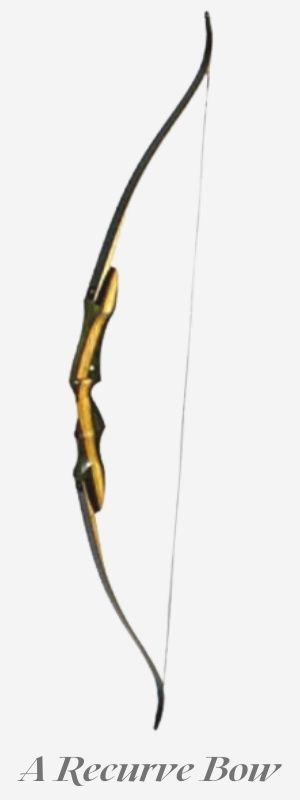Recurve bow vs Compound bow; this discussion can get stuck in your head when you’d want to get one of these things. And both bow types have their own fan zone and users and sometimes the fight just keeps on going.
Now, we don’t know if you’re a beginner or an expert but if you’re a great bow enthusiast, we think after reading this article, you can tell the actual differences between recurve bow and compound bow.
Which one’s better? To be honest, both are great in their own zone. You can take either, or you can buy both so that you can use any of these bows whenever you need to.
Table of Contents
- What Is A Recurve Bow?
- What Is A Compound Bow?
- Recurve or Compound - Which is Easy To Use?
- Comparison of Power Between Compound and Recurve
- Compound Vs Recurve Bow Durability Comparison
- Recurve Bow and Compound Bow Aiming
- Recurve vs Compound Bow Maintenance
- Comparison of Adjustability Between Recurve and Compound
- Compound Vs Recurve Portability
- Size of Compound and Recurve
- Weight of Recurve Vs Compound
- Compound Bow vs Recurve Bow Affordability
- Compound Bow Vs Recurve Bow For Beginners
- Recurve Bow vs Compound Bow Hunting
- Recurve Vs Compound Bow Pros And Cons At a Glance
- Wrapping Up!
What Is A Recurve Bow?
It is a traditional bow type that comes with limb tips that are facing the opposite side of the archer when the bow is unstrung. The curved limbs bend towards the archers and enable the bow to store more energy, which results in faster arrow speeds.
Recurve bows mostly look like longbows. Compared to longbows, recurve bows can store more energy. In case you don’t know what a longbow is, it is the traditional bow that people use to make with long sticks. They are less powerful and accurate.
Recurve bows are used in Olympic archery and were pretty popular for hunting and recreational shooting. These bows are typically made from wood, fiberglass, or carbon fiber. And can be used for both hunting and target shooting.
Their sizes range from 48 inches (120 cm) to 72 inches (180 cm) long and can be used by both right- and left-handed shooters. Recurve bows are lightweight and they are very easy to carry.

What Is A Compound Bow?
This is a bow that utilizes levering system to make using the bow easier. Compound bows come with cams, pulleys, and thick cables. The pulleys, cams, and cables enable the bow to store more energy, which results in faster arrow speeds and more power.
The pulleys, cam, and cable system allow the archer to hold less weight in their arms, making it easier to aim and fire for extended periods of time.
Compound bows are typically made from aluminum or magnesium. The use of compound bows has become increasingly popular in recent years, especially among hunters and target shooters.
These bows are now widely used in tournaments, as they offer both power and accuracy, along with comfy easy drawing.

Recurve or Compound - Which is Easy To Use?
Even though compound bows look pretty complex due to the cables, pulleys, and cams; compared to the recurve bow, compound bows are way easy and comfortable to use. All thanks go to the let-off feature of compound bows.
Due to the let-off, when you are drawing the string fully, you won’t have to hold back all the weight of force stored within the bow. And when you release the string, that won’t affect the firing power. The reduction in weight is called the Let-off.
Let us give an example so that you will understand better. If you are fully drawing a recurve bow that has a draw weight of 60lbs, once fully drawn, you will have to hold back the same force weight (60 lbs.) until you release it. So that the same energy will be imparted to the arrows.
And what’s different in the compound bow is, if you are using a compound that comes with 50% let-off and 60 lbs draw weight. With that, you will be pulling the string at 60 lbs force, but once you have drawn the string fully, the force weight will get automatically get reduced to 30 lbs.
That means you will have to hold back half of the force weight. But when you release the string, the bow will transfer 60 lbs force to the arrows. That’s the magic of let-off; you get the same speed and power with less effort.
Key takeaway: In terms of easy use, compound bows effortlessly outshines recurve bows.
Comparison of Power Between Compound and Recurve
Both the compound bow and recurve bow are widely found with 70 lbs peak draw weight. And anything you want to accomplish with a bow can be accomplished with that weight. There are bows with higher draw weight but due to very low demand, they are now not seen.
When the overall condition is ideal and uses the same length and weight of arrows, a compound bow with 70 lbs draw weight will be more powerful than a 70 lb recurve bow.
Even though both of the bows impart the same amount of force but the cams and cable string system of the compound bow make a more efficient flinging of arrows. And that results in more power.
Key takeaway: Compound bows are more powerful than recurve bows.
Compound Vs Recurve Bow Durability Comparison
How durable a bow would be that depends on the material and construction. The better the material and construction, the longer the bow will last. Both the recurve and compound bows are constructed with varieties of materials.
The limbs of recurve bows are made of top-notch laminated wood; the risers are made of either aluminum, carbon, or laminated wood, which are durable and promising materials.
On the other hand, compound bow risers are also constructed with fiberglass, carbon, aluminum, etc. The limbs are constructed with laminated wood, the same as recurve bow.
Both of these bows can be durable or fragile depending on the material and construction, so it isn't possible to mention one as a winner.
Key takeaway: Compound bow and recurve bow, both can be durable depending on material and construction.
Recurve Bow and Compound Bow Aiming
We have to get back to the let-off again because that makes aiming easy on compound bows. You will find compound bows in the market coming with 70 lbs draw weight and 80% let-off.
With such a compound bow making accurate shots become effortless. When you make a full draw, you would be holding only 14 lbs force which is way too lightweight. And when the holding force is very low, it is obvious that you will be comfortable holding it which will result in accurate shots.
Recurve bows lack that. As we have said before, with a 70 lbs draw weight you will have to hold back the same force weight. 70 lb force weight isn’t a joke, it takes good effort and concentration which might make it hard for you to aim.
Key takeaway: It is easy to aim better with compound bows.
Recurve vs Compound Bow Maintenance
When it comes down to maintenance, recurve bows overtake compound bows by a good distance. In recurve bows, when the string snaps, you can re-string it manually by hand. And it is pretty easy to do.
Not only string, even if limbs break, you will also be able to replace the limbs easily. All you need to do is, just bolt the new limbs, and you are done.
But that is not the case with compound bows. Once your compound bow string snaps, you won’t be able to use the bow without a visit to the pro shop. Due to the complex mechanism of compound bows, there are hard to maintain.
Key takeaway: Recurve bows are easy to fix anywhere.
Comparison of Adjustability Between Recurve and Compound
You can’t adjust anything in recurve bows. You can use different limbs to increase or decrease the power, but once you assemble your recurve bow with one set of limbs that will deliver only one fixed power range.
And in terms of speed, you can decrease the firing power by not drawing the string much but that’s not adjustability.
On the other side, compound bows allow you to adjust the draw length and draw weight effortlessly. You will require a tool to adjust the draw weight and length, and most of the time, the bow package includes the tool as well.
Key takeaway: Compound bow is adjustable; recurve bow isn’t.
Compound Vs Recurve Portability
Now, most of the recurve bows can be dismantled into different parts for easy storage and portability. The limbs can be taken out and risers can be removed. Which you can’t do with compound bows. They are fixed and can’t be taken down for portability.
Key takeaway: Recurve bows are highly portable and easy to store.
Size of Compound and Recurve
Compound bows are usually smaller than recurve bows. A recurve bow of the same power as a compound bow is usually larger. A compound bow with a 70 lbs draw-weight will have a length of 30-32 inches. Where a recurve bow with the same draw-weight comes with a limb to limb length of 60 - 64 inches.
Key takeaway: Compound bows are smaller than recurve bows
Weight of Recurve Vs Compound
Even though recurve bows are longer than compound bows, they are lightweight. There goes a lot of parts into compound bows such as thick cables, pulleys, risers, limbs, cams, etc., which makes compound bows weigh more than recurve bows.
Key takeaway: Recurve bows are lightweight.
Compound Bow vs Recurve Bow Affordability
Compound bows are expensive as they consist of a lot of things. But a recurve bow is very simple which is why they are pretty affordable.
Key takeaway: Recurve bows are affordable than compound bows
Compound Bow Vs Recurve Bow For Beginners
Experts recommend beginners to start with recurve bows as they are lightweight and very simple to understand. Compound bows are complex due to their mechanism which can be a little confusing for beginners.
Another perk of using a recurve bow with high draw weight when starting is, that you will get used to the heavyweight and when you are given a compound bow, you will be able to aim and enjoy it better.
Key takeaway: Recurve bows are better for beginners than compound bows.

Recurve Bow vs Compound Bow Hunting
When it comes to hunting, you need to consider a bunch of elements before choosing a bow. Power, speed, effective range, and accuracy are some most important factors playing vital roles in successful hunting.
Compound vs Recurve bow, which type of bow can combine all these factors better? Let's find out.
Power
The more powerful your bow is, the better penetration it will offer, which is essential for hunting down your target. Due to the let-off, compound bows are usually more powerful than recurve bows.
As you don't need much upper body strength to draw a compound bow, it allows you to gain more power with less effort. Also, it helps you to hold the arrow in a drawn position longer than a recurve bow. This is particularly helpful when you're aiming at a moving target.
So, we suggest a compound bow over a recurve bow if you want more power and better penetration for hunting.
Shooting Speed
For many people, the complexity and weight of a compound bow is a huge letdown. But not for hunters. The infused technology and extra weight harness more energy and deliver better speed. Many high-quality compound bows can shoot at 350 fps speed whereas most recurve bows barely reach 200 fps.
However, this doesn't mean every compound bow is faster than recurve. Some hunters prefer recurve bows because of their minimum weight and ease of use. And you can always better quality arrows to increase the speed of a recurve bow.
However, you should always choose a good compound bow if you want more speed on the field.
Effective Range
How much distance the arrow will reach depends on its effective range. The kinetic energy and speed of the arrow decide how far the arrow will travel and how hard it will hit the target. Compound bows offer a greater effective range than the recurve bow.
That's because compound bows can shoot at more defined distances at defined speeds. But that doesn't necessarily mean compounds are always the perfect fit. Sometimes you need to aim for a closer target and recurve bow bows are best for this purpose.
Moreover, shooting from a closer distance helps you to go nearer to the target and learn handy hunting skills like tracking, camouflage, stalking, concealment, etc. So, try to choose compound bows for distant targets and go for recurves for closer ones.
Accuracy
You can't hunt without getting good at aiming. For most people, compound bows are better for aiming and hitting the target with precision. The credit for this accuracy goes to the design of compound bows. They can accommodate a number of useful accessories that helps to aim without much effort.
Multiple sighting systems, sites, stabilizers, rangefinders, etc. are some such handy tools that help the shooter to earn greater accuracy while hunting. Therefore, when it comes to accuracy, the compound bow is a clear winner.

Key takeaway: Compound bows are better for hunting than recurve bows.
Recurve Vs Compound Bow Pros And Cons At a Glance
As said before, compound bows and recurve bows come with their own set of advantages and disadvantages. Check them out…
Recurve Bow Advantages
Recurve Bow Flaws
Compound Bow Advantages
Compound Bow Flaws
Wrapping Up!
That was pretty much it on the recurve bow vs compound bow thing. Like we’ve said, both of these bows are just great. But you just got to know which one to use when. Just make sure, you can get your hands on the best recurve bow or the best compound bow, and you’ll be good to go.
Read Related Comparison:

